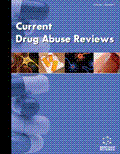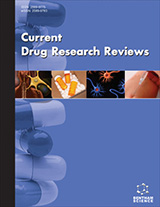Abstract
Ghrelin is a gut-brain hormone that regulates energy balance through food consumption. While ghrelin is well known for its role in hypothalamic activation and homeostatic feeding, more recent evidence suggests that ghrelin also is involved in hedonic feeding through the dopaminergic reward pathway. This paper investigated how ghrelin administration (intraperitoneal, intracerebroventricular, or directly into dopaminergic reward-relevant brain regions) activates the dopaminergic reward pathway and associated reward-relevant behavioral responses in rodents. A total of 19 empirical publications that examined one or more of these variables were included in this review. Overall, ghrelin administration increases dopamine levels in the nucleus accumbens, as well as reward-relevant behaviors such as food (both standard chow and palatable foods) and alcohol consumption. Ghrelin administration also increases operant responding for sucrose, and conditioned place preference. Following a review of the small body of literature examining the effects of ghrelin administration on the dopamine reward pathway, we present a model of the relationship between ghrelin and dopaminergic reward activation. Specifically, ghrelin acts on ghrelin receptors (GHS-R1A) in the ventral tegmental area (VTA) and lateral dorsal tegmental nucleus (LDTg) to stimulate the mesolimbic dopamine reward pathway, which results in increased rewarding behaviors in rodents. Results from this review suggest that selective antagonism of the ghrelin system may serve as potential treatment for addictive drug use. This review highlights gaps in the literature, including a lack of examination of sex- or age-related differences in the effects of ghrelin on dopamine reward processes. In light of vulnerability to drug abuse among female and adolescent populations, future studies should target these individual difference factors.
Keywords: Alcohol, dopamine, feeding, ghrelin, nucleus accumbens, reward pathway.
Current Drug Abuse Reviews
Title:Role of Ghrelin in Drug Abuse and Reward-Relevant Behaviors: A Burgeoning Field and Gaps in the Literature
Volume: 6 Issue: 3
Author(s): A.R. Revitsky and L.C. Klein
Affiliation:
Keywords: Alcohol, dopamine, feeding, ghrelin, nucleus accumbens, reward pathway.
Abstract: Ghrelin is a gut-brain hormone that regulates energy balance through food consumption. While ghrelin is well known for its role in hypothalamic activation and homeostatic feeding, more recent evidence suggests that ghrelin also is involved in hedonic feeding through the dopaminergic reward pathway. This paper investigated how ghrelin administration (intraperitoneal, intracerebroventricular, or directly into dopaminergic reward-relevant brain regions) activates the dopaminergic reward pathway and associated reward-relevant behavioral responses in rodents. A total of 19 empirical publications that examined one or more of these variables were included in this review. Overall, ghrelin administration increases dopamine levels in the nucleus accumbens, as well as reward-relevant behaviors such as food (both standard chow and palatable foods) and alcohol consumption. Ghrelin administration also increases operant responding for sucrose, and conditioned place preference. Following a review of the small body of literature examining the effects of ghrelin administration on the dopamine reward pathway, we present a model of the relationship between ghrelin and dopaminergic reward activation. Specifically, ghrelin acts on ghrelin receptors (GHS-R1A) in the ventral tegmental area (VTA) and lateral dorsal tegmental nucleus (LDTg) to stimulate the mesolimbic dopamine reward pathway, which results in increased rewarding behaviors in rodents. Results from this review suggest that selective antagonism of the ghrelin system may serve as potential treatment for addictive drug use. This review highlights gaps in the literature, including a lack of examination of sex- or age-related differences in the effects of ghrelin on dopamine reward processes. In light of vulnerability to drug abuse among female and adolescent populations, future studies should target these individual difference factors.
Export Options
About this article
Cite this article as:
Revitsky A.R. and Klein L.C., Role of Ghrelin in Drug Abuse and Reward-Relevant Behaviors: A Burgeoning Field and Gaps in the Literature, Current Drug Abuse Reviews 2013; 6 (3) . https://dx.doi.org/10.2174/1874473707666140205200532
| DOI https://dx.doi.org/10.2174/1874473707666140205200532 |
Print ISSN 1874-4737 |
| Publisher Name Bentham Science Publisher |
Online ISSN 1874-4745 |
 46
46Related Articles
-
Production of Retroviral Vectors: Review
Current Gene Therapy The Effects of Placental Corticotrophin Releasing Hormone on the Physiology and Psychology of the Pregnant Woman
Current Women`s Health Reviews Epidermal Growth Factor Receptor Inhibitors: A New Prospective in the Treatment of Lung Cancer
Current Medicinal Chemistry - Anti-Cancer Agents The Chemical Defensive System in the Pathobiology of Idiopathic Environment- Associated Diseases
Current Drug Metabolism Effects of Fluoxetine and Venlafaxine and Pilocarpine on Rat Parotid Glands
Medicinal Chemistry Rodent Models of Persistent Pain in Drug Discovery and Development
Current Pharmaceutical Biotechnology Alcohol Enhances HIV Infection of Cord Blood Monocyte-Derived Macrophages
Current HIV Research Multitarget Selective Antidepressants Design: Latest Developments, Opportunities and Challenges
Central Nervous System Agents in Medicinal Chemistry Role of Mitochondrial Protein Quality Control in Oxidative Stress-induced Neurodegenerative Diseases
Current Alzheimer Research Machine Learning Methods in Precision Medicine Targeting Epigenetic Diseases
Current Pharmaceutical Design CRISPR/Cas9 Technology as a Modern Genetic Manipulation Tool for Recapitulating of Neurodegenerative Disorders in Large Animal Models
Current Gene Therapy Signal Transduction via Cannabinoid Receptors
CNS & Neurological Disorders - Drug Targets Atomic Force Microscopy Investigation of Ribonuclease A
Protein & Peptide Letters New Potential Targets to Modulate Neutrophil Function in Inflammation
Mini-Reviews in Medicinal Chemistry Current Status of Complementary and Alternative Medicine in the Treatment of Rheumatic Disease Pain
Current Rheumatology Reviews The Role of Parthenolide in Intracellular Signalling Processes: Review of Current Knowledge
Current Signal Transduction Therapy Application of Carbon Nanotubes In Drug Delivery of Non-cancerous Diseases: A Review
Current Pharmaceutical Design The Therapeutic Potential of Sigma (σ) Receptors for the Treatment of Central Nervous System Diseases: Evaluation of the Evidence
Current Pharmaceutical Design Cycloxygenase-2 (COX-2) - A Potential Target for Screening of Small Molecules as Radiation Countermeasure Agents: An In Silico Study
Current Computer-Aided Drug Design Ghrelin, A Novel Peptide Hormone in the Regulation of Energy Balance and Cardiovascular Function
Recent Patents on Endocrine, Metabolic & Immune Drug Discovery (Discontinued)
















